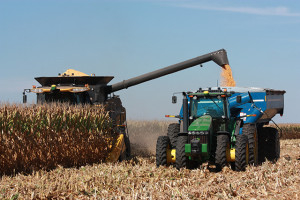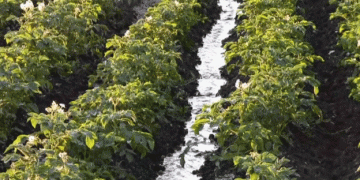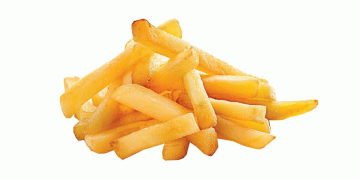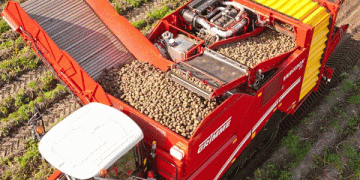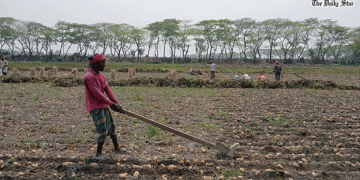At a recent meeting of the United Fresh Supply Chain Logistics Council, chairman Kenny Lund asked all in attendance to predict how long it would be before autonomous trucks are accepted in transportation for produce.
“The responses were anywhere from my answer, which is under five years, to never because government regulations won’t allow it,” he said. “But most people feel it will happen in the next 20 years.”
Some farmers are already taking advantage of the technological advancements of tractors that operate without the need for drivers, and it’s something that Lund feels will branch out to trucks and other areas.
“There may be a driver on the truck, but the truck will be driving itself. It’s already happening and we’re only going to see more of it,” Lund said. “I think people would be shocked at how much technology is in the truck today. There are satellite uplinks, mechanics able to monitor engines in real time, and it’s all really fascinating.”
Autonomous tractors
James Thompson, president of UC Davis’ Postharvest Engineering, notes there has been a rising interest in driverless vehicles in agriculture, and driverless tractors are being used on numerous farms and many small businesses.
These tractors contain GPS-based technology, which help them perfect a route down to the inch, reducing overlap by 90 percent to save time, resources and money.
Thompson warns that there are safety issues because of the potential of equipment malfunctions – which necessitates someone still being on the tractor – but the benefits far outweigh the negatives. The machine’s ability to self-steer and follow pre-programmed routes frees up a farmer’s time to focus on other important operations of the farm.
Kinze Manufacturing, located in Williamsburg, Iowa, is currently developing two variations of driverless tractors, utilizing some of the same self-driving technology being used by Google cars. Only instead of driving along our city streets collecting data, their tractors will drive back and forth across farm fields.
One of Kinze’s earliest models came from a partnership with Jaybridge Robotics, which lets human-driven tractors offload grain into autonomous carts that follow them across the field.
“This is a giant step from existing technology in that it is truly autonomous and there is no human override in the cab,” said Susanne Kinzenbaw Veatch, Kinze’s vice president and CMO. “The systems allow one farmer to operate multiple systems at the same time, vastly increasing efficiency.”
Planes, trains and ships
Thompson feels ships are too slow to have much of an effect on produce in the future, but airplanes will receive more use for specialty items. Currently, refrigerators are rarely used on planes, but he can see that changing in a limited capacity.
In Lund’s opinion, trucks are really where the most change is going to occur in transportation methods in the next two decades. He said planes are going to be mostly the same, and ships will run with smaller crews and be more automated, but not change the industry too much.
Additionally, Lund said rail continues to “shoot itself in the foot” and will remain a difficult transportation mode for produce.
“It does a significant amount of product but it should be much higher,” he said. “They don’t seem to have the economic incentive to change the way things are set up. Refrigerated boxcars are wonderful, but they are painful to load and unload and getting the product to the rail makes it hard on the produce.”
Future of drones
Lund is a drone pilot and understands the benefits they offer. He expects the technology to play a role in produce in the future.
“Of course, it can’t deliver a truck load; it’s very small quantities in small distances,” he said. “I think 20 years from now, they will be much more involved in farming, mostly in monitoring the produce, measuring, checking sprays and things like that.”
Thompson doesn’t believe drones are the answer because they tend not to do well in inclement weather and are not yet dependable.
“People will be using their imagination but I think their use will be limited,” he said.
Final thoughts
The appearance of trucks and transportation vehicles probably won’t change too much, Lund said, although he can see tractors getting a bit more sleek and streamlined. Otherwise, they need to keep that big boxy look to hold large quantities.
Thompson anticipates there will be an uptick in refrigerated vehicles, which will be lighter thanks to more use of aluminum, and offer better fuel efficiency, especially for the supply of product for fresh cut operations. “Longer term, I expect we may see more experimenting with driverless trucks, brought on about a lack of drivers,” he said. “Trucks may be better electronically connected.”
One factor that could make a huge difference for transportation in the future is the advancements of aerogels, which is light-foam insulation and would be ideal for moving fresh produce. The problem now, Thompson said, is that it’s very expensive.
“If you could find a way to use aerogels inexpensively, then you could ship refrigerated items without mechanical refrigeration and you could ship with other items,” he said. “That’s something very limited right now.”
Lund thinks people would be shocked at how much technology is already in trucks today.
“We have satellite uplinks, mechanics who are able to monitor the engine in real time plus storage of data, and they can do so as they’re out on the road,” he said. “The ability to track everything is well on its way and certainly in 20 years, you will know exactly what parts to repair and replace even before the truck does.”
